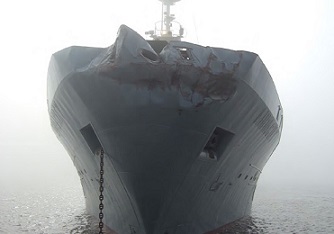
Damage survey and countermeasures after a collision accident by ships- How to prevent further damage?
When a ship gets collide with another ship or makes contact damage to a terminal structure, the ultimate cost of damage repair plus loss of cargo and environmental damage due to oil spillage can run into millions of dollars. Loss of lives and, or crew injury adds more financial burden onto a shipowner. Unfortunately, collision accidents at sea occur not only in a dense traffic-congested area or due to restricted visibility and, or machinery/equipment failure, and similar incidents, but a significant amount of incidents happening at open sea with clear visibility. Recent P&I club report published on some major casualties suggest that substandard bridge procedure, human error and lack of situational awareness were the root cause in many collision incidences.


